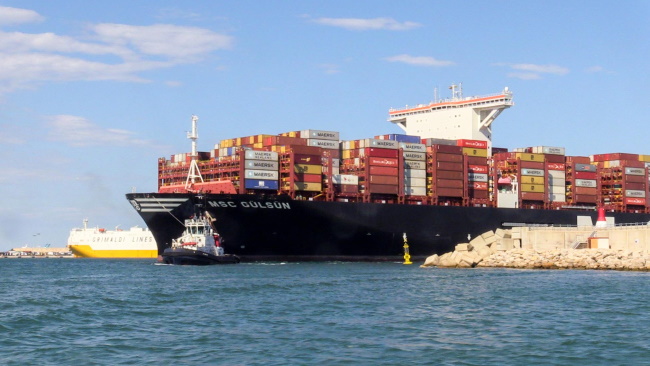
The Valencia Containerised Freight Index (VCFI) has started the year with a growth of 10.41% in line with the last half of last year. The demand in the shipping market remains high for this time of the year, which is also reflected in the low share of the idle fleet, which stands at 1%. In January, all the geographical areas analysed by the index experienced increases in freight rates, in the case of the Western Mediterranean by 3.05% and the Far East by 4.24%. Thus, the VCFI created by the Port Authority of Valencia to reflect the evolution of maritime transport rates reaches 1,571.29 points, accumulating an increase of 57.13% since the beginning of the series in 2018.
One of the factors in the variation of freight rates is to be found in the average price of a barrel of European Brent, which in January has once again recorded an increase of 9.56%, making it three consecutive months on the rise. In the same direction, bunkering prices (fuel supply to a vessel) increased again in January compared to the previous month, generating several positive months to recover the levels lost in the first part of 2020.
Demand in the maritime transport market has levelled off after several months of strong growth due to the dynamism of international trade. Thus, a stabilisation in port traffic was already noticeable in November and continued in December, according to the RWI/ISL data compiled by the Leibniz Institute for Economic Research. This lower demand has been noted in the freight levels reported by the SCFI (Shanghai Containerized Freight Index) for the first weeks of 2021, which show a moderation that puts an end to the continuous increase since October 2020.

MSC Gulsun 3 in Port Valencia
However, as Alphaliner points out, despite this change in trend, demand levels remain high for this time of year, which is also reflected in the low share of idle fleet in the market. Thus, while on 4 January the levels of inactive containerships represented 1.3% of the total active fleet, on 18 January this fell to 1.0%, to 314,721 TEUs (standard 20-foot containers).
As for the geographical areas studied by the VCFI, it should be noted that for the first time since 2018, all of them experienced growth compared to the previous month. Among them, it is worth highlighting the strong increase in freight rates to the Baltic States (+21.24%) and Atlantic Europe (+10.44%). Freight rates to the Middle East (+13.49%) and the Indian Subcontinent (+6.40%) also increased, two areas that have experienced very high export traffic from Valenciaport in the second half of 2020, exceeding the previous year’s cargo levels for the same period of the year.
A notable case is that of freight with the United States and Canada (8.20%). Although exports from Valenciaport have been on a downward trend since October with these markets, the pressure of world demand towards these regions seems to be the cause of the rise in freight rates.
Source: Port Authority of Valencia

